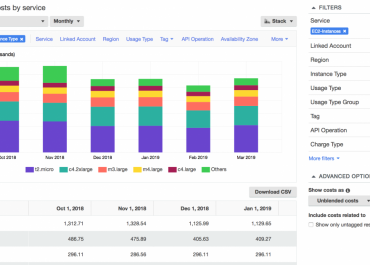AWS Data Transfer Cost
Data Transfer Costs:
Before we begin you may want to try our advanced data transfer calculator
AWS Data Transfer Calculator
AWS charges if data is transferred to the internet or between AWS services, regions or Availability zones. Private or public IP or even transferring data to Amazon CloudFront and distributing from them will also effect overall cost structure.
Data is the most valuable asset a company possesses. By using the cloud, you will boost the flexibility and mobility of that data to get an enhanced value. The cloud makes it simple to transfer data wherever you want and whenever you want. However, this transfer of data is going to cost money, and aws data transfer costs are going to keep adding up at a quick pace.
What Are They?
They are the costs that AWS charges in order to transfer data in 2 ways:
- Between AWS and the Internet
- Within AWS, between services, like EC2 or S3
-Some AWS services account for the cost of moving data in or out as part of the cost of the service itself and are not billed separately.
-There might not be a distinct data transfer cost in either direction, like with AWS Kinesis.
-There might be a distinct cost to move data one way (in or out), but no cost for the other way, like transferring to and from S3 across distinct regions.
-There might also be a cost to transfer data both in and out, like transferring across EC2 instances in distinct availability zones.
This means that controlling data transfer costs is knowing the exact path your data is going to take while moving around.
Data transfer: Between AWS and the Internet
When transferring data from AWS to the internet, the costs will highly be dependent on the region.
-S3 buckets found in US West (Oregon) region:
The first GB per month for free, and the next 9.999 TB per month will cost $0.09 per GB.
Yet, when S3 buckets are located in South America (São Paolo) region:
The first GB per month is still for free, but the next 9.999 TB per month will cost $0.25 per GB.
Data transfer: Within AWS
Data can be transferred across regions or within one region when transferring within AWS.
Data transfer across regions
Same cost structure as that of transferring data between AWS and the internet.
Costs depend on the region as well, but transfer into one region from any different region is free of charge.
This means you only pay for the outbound transfer of the originating region and not for the inbound transfer in the target region.
Data transfer within regions
Data transferred between AWS services in a specific region will cost differently by depending on whether data is transferred within or across Availability Zones.
Free data transfers when:
- Within the same region,
- Within the same availability zone
- Using a private IP address
Data that is transferred within the same region but in distinct availability zones will get a cost associated with it.
Cost-Saving Tips:
Plan Your Route
The highest costs are for transferring data between regions.
Second-highest costs are the ones accompanied by the transfer of data between Availability Zones in a specific region.
The lower costs are those of data transfer in a single Availability Zone.
You should reduce data transfer costs by creating an infrastructure that allows data to flow along the least expensive routes.
Lessen traffic across regions and Availability Zones.
Raise traffic that remains in an Availability Zone or, in one region at least.
When not relying on a specific region, check a few of them to see which one of them offers the most cost savings.
Use Private IP Addresses
Data transferring costs are higher with public IP or Elastic IP addresses than with a private address when working across the board.
Utilizing private IP addresses at constant times can help in reducing costs.
Try Amazon CloudFront
It’s a widespread Content Delivery Network service.
It costs nothing to transfer data from EC2 to Amazon CloudFront.
When you intend on transferring high volumes of data to the users, like videos, images and audio, CloudFront will be beneficial by keeping those data transfer costs down.
Pricing for transferring data from CloudFront to the internet depends on Region & Amount of Data.
Check out a couple of options:
Regional Data Transfer Out to Internet (per GB)
| Per Month | United States & Canada | Europe | South Africa & Middle East | Japan | Australia | Singapore, South Korea, Taiwan, Hong Kong, & Philippines | India | South America |
| First 10TB | $0.085 | $0.085 | $0.110 | $0.114 | $0.114 | $0.140 | $0.170 | $0.250 |
| Next 40TB | $0.080 | $0.080 | $0.105 | $0.089 | $0.098 | $0.135 | $0.130 | $0.200 |
| Next 100TB | $0.060 | $0.060 | $0.090 | $0.086 | $0.094 | $0.120 | $0.110 | $0.180 |
Try AWS Simple Monthly Calculator
Experiment with various configurations in order to see how to save money as much as possible.
Directly check out which variables are capable of impacting your costs.
Choose which resource you wish to use, like EC2 or S3, put your required region, and check the Data Transfer section to know what to consider.
Add random values you want to check so that you get a sense of how the costs will be.
EC2 and S3 Costs
They are the widely-used AWS services. So, let’s find out what comes free and what doesn’t.
EC2
- In the same region, no data transfer cost need when moving data out of EC2 to:
-Amazon SES
-Amazon SQS
-Amazon SimpleDB
-Amazon S3
-Amazon Glacier
-Amazon DynamoDB
- In the same Availability Zone, no data transfer cost needed when moving data to the following:
-Amazon ElastiCache instances
-Amazon Elastic Load Balancing
-Amazon RDS
-Amazon Redshift
-Elastic Network Interfaces
No matter the region or Availability Zone, there’s no cost to transfer data to CloudFront or when using a private IP address. Any data transfer IN to Amazon EC2 from the internet is totally free.
S3
-Data transfer IN to S3 from the internet: Free.
-Data transfer OUT to CloudFront: Free.
-Everything else: Specific costs.
-S3 data transfer acceleration options: Extra costs.
-Pricing depends on AWS Edge Location used in order to accelerate data transfer.
- Data Transfer: IN – to Amazon S3 from the Internet:
| Accelerated by AWS Edge Locations in the United States/Europe and Japan | $0.04/GB |
| Accelerated by all other AWS Edge Locations | $0.08/GB |
- Data Transfer: OUT – from Amazon S3 to the Internet:
| Accelerated by any AWS Edge Location | $0.04/GB |
Monitor Data Transfer Costs
As you gain more knowledge about your AWS data transfer costs, you’ll get better at taking control of it.
You should know what you’re spending and how you can be cost-efficient without losing any control the cloud provides you with.
That’s the reason for needing a cloud cost management platform. Using its wide variety of capabilities, everyone using it can work together to save money and increase efficiency.
When you wish to control your data transfer costs, then you require visibility over costs and data analysis reports that offer you actionable insights.

